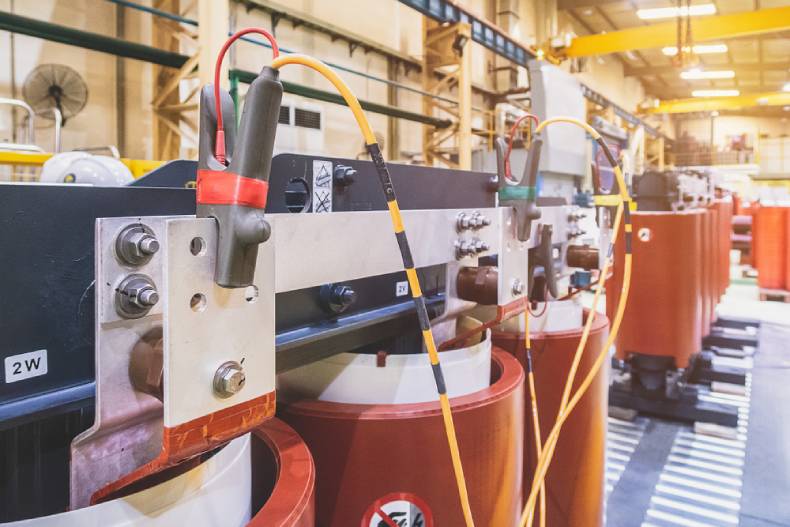Cities are moving at a pace no one quite expected. Electric buses slip into traffic with barely a sound, high-rises are managed by intelligent systems that seem almost alive, and rooftops are now miniature power plants soaking up the sun.
But here’s the part people don’t always think about: how do you keep the grid steady when demand swings wildly from one moment to the next?
The answer doesn’t lie in something flashy or futuristic—it often rests on equipment that works quietly in the background. The dry type transformers.
At Jaybee Industries, we’ve been close to this shift for years. Watching cities evolve from early “smart” pilots into full-scale, always-on ecosystems has taught us something simple but critical: digital tools may guide the system, but transformers are what hold it together.
Power Needs That Go Beyond the Obvious
A truly smart city relies on far more than digital tools and flashy applications. They need dependable electricity, clean energy integration, and a safety net for essential services. Hospitals, transport hubs, metros, data centers—they can’t afford a flicker of downtime.
This creates unusual pressure on urban grids. They must:
- Absorb unpredictable renewable inputs.
- Support a growing fleet of EV chargers.
- Balance compactness with safety in crowded areas.
That’s where dry type transformers excel. No oil means reduced fire risk. Maintenance demands are lower. And their ability to be installed indoors makes them a natural fit for cities where every square foot matters.
Why Dry Type Designs Belong in Smart Grids
Today’s grids aren’t passive—they adjust in real time, optimizing loads while responding to peaks and dips. If the backbone equipment can’t keep up, the system falters.
A dry type power transformer offers key benefits that stand out in this environment:
- Safe operation in dense spaces.
- Strong tolerance for heat and overload.
- Compatibility with both renewable and traditional sources.
As cities stretch upward and even underground, compact, low-risk transformer systems are no longer a luxury—they’re a necessity. At Jaybee Industries, we’ve focused on designs that don’t force city planners to choose between efficiency and safety.
The Precision That Keeps Everything Running
One crucial piece of the puzzle often overlooked is the accuracy of measurement. Smart grids can only make “smart” decisions if the data feeding them is precise.
That’s where a dry type current transformer proves invaluable. They provide exact current readings under tough loads, ensuring that operators have the numbers they need to make informed adjustments.
When accuracy slips, energy losses creep in, and the whole concept of a smart city becomes harder to sustain. For us, precision isn’t an add-on. It’s built into how we approach every transformer we design.
Safety by Design, Not by Chance
Urban environments raise unique safety challenges. Transformers often sit close to schools, hospitals, shopping complexes, or underground facilities. Fire resistance and reliability aren’t just checkboxes—they’re essentials.
An epoxy resin dry type transformer has become a game-changer here. Their insulation strength and fire-resistant qualities create a much safer operating environment. At Jaybee Industries, these details guide the engineering process from start to finish. Performance is important—but never at the cost of safety.
Why Trust Matters as Much as Technology
Technology alone doesn’t keep a city running. What really matters is whether the people behind that technology understand long-term needs. That’s why we treat every installation as an ongoing partnership. Listening. Adjusting. Supporting growth beyond the initial setup.
For us, transformers aren’t simply units of hardware. They’re anchors of trust inside an urban grid. And when those anchors are strong, entire cities feel the benefit.
Smarter Cities Need Smarter Choices
The future of any smart city rests on the strength of its grid. And the grid’s resilience depends heavily on the transformers woven into it. Dry type transformers give cities a safer, cleaner, and more efficient backbone to build on.
At Jaybee Industries, this principle guides the way we design and deliver every solution. Whether it’s designing dry-type systems for critical safety zones or manufacturing transformers that support solar integration, our goal is the same: to build solutions ready for the challenges of tomorrow.
That’s why, as a trusted solar inverter transformer manufacturer, we don’t just deliver equipment—we deliver confidence that cities can rely on for decades.
Also Read:-
Why The Right Power Transformer Supplier Is Key To Hydrogen Energy Scaling
How Dry Type Transformer Suppliers In India Ensure Fire Safety
More Useful Links:-
Power Transformers Suppliers | Leading Transformer Manufacturers in India | Distribution Transformer Manufacturers
FAQs
Q. Why are dry type transformers suited for smart cities?
Dry type transformers are safer, compact, and low-maintenance, making them ideal for dense urban areas. They operate efficiently indoors, reduce fire risks, and adapt easily to renewable integration, all of which are critical for modern smart city grids.
Q. How does a dry type power transformer support grid stability?
A dry type power transformer ensures reliable voltage regulation and heat resistance while maintaining safety in confined environments. Its design makes it well-suited for renewable-heavy smart grids where performance and resilience are equally important.
Q. What role does a dry type current transformer play?
A dry type current transformer provides accurate current measurement, allowing operators to monitor load conditions in real time. This precision supports efficient grid operation, reduces energy losses, and strengthens the decision-making framework of smart city power networks.
Q. What is unique about epoxy resin dry type transformers?
Epoxy resin dry type transformers offer advanced insulation, improved fire resistance, and reliable performance in high-density areas. These qualities make them a safer choice for sensitive installations like hospitals, metro systems, and schools in smart city environments.

